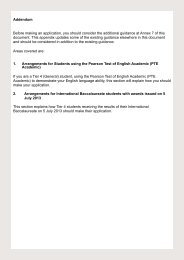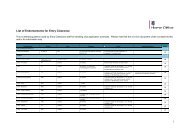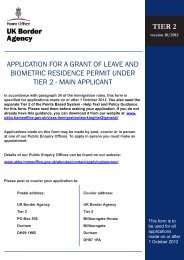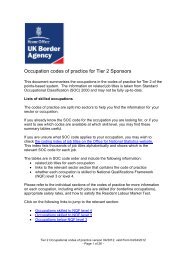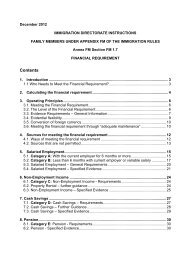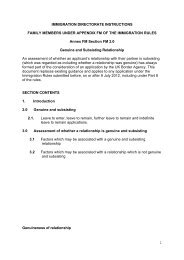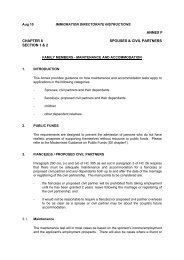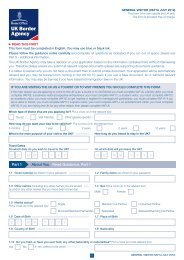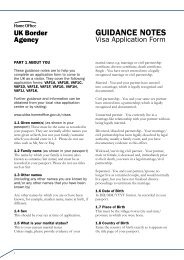COI Report March 2012 - UK Border Agency - Home Office
COI Report March 2012 - UK Border Agency - Home Office
COI Report March 2012 - UK Border Agency - Home Office
Create successful ePaper yourself
Turn your PDF publications into a flip-book with our unique Google optimized e-Paper software.
7 MARCH <strong>2012</strong> SRI LANKA<br />
―A Court official in Vavuniya said only one. The courts issue two copies but only one is<br />
served and the other is kept in the police station.<br />
―The Sri Lanka Police – Information Services Room told us that a warrant of arrest is<br />
issued if a person fails to appear after a summons has been served on three occasions.<br />
―A lawyer in Colombo agreed that a warrant for arrest is served after the third occasion<br />
a person fails to appear.‖<br />
11. PRISON AND DETENTION CENTRE CONDITIONS<br />
The main text of this <strong>COI</strong> <strong>Report</strong> contains the most up to date publicly available information as at 3 February <strong>2012</strong>.<br />
Further brief information on recent events and reports has been provided in the Latest News section<br />
to 2 <strong>March</strong> <strong>2012</strong>.<br />
Return to contents<br />
11.01 The US State Department 2010 Human Rights <strong>Report</strong>: Sri Lanka (USSD 2010) 209 ,<br />
released on 8 April 2011 noted that:<br />
―Prison conditions did not meet international standards due to overcrowding and the<br />
lack of sanitary facilities. According to prison officials and civil society sources, prisons<br />
designed for approximately 10,000 inmates held an estimated 26,000 prisoners.<br />
Approximately 1,400 of these were women. Some 12,000 of these total prisoners were<br />
convicted, while the remaining 14,000 were in detention either awaiting or undergoing<br />
trial. In some cases juveniles were not held separately from adults. Pretrial detainees<br />
often were not held separately from those convicted. In many cases prisoners were<br />
reported to be sleeping on concrete floors and often without natural light or sufficient<br />
ventilation. Female prisoners were held separately from male prisoners and in generally<br />
better conditions, but some human rights groups alleged that isolated incidents of<br />
degrading treatment occurred, including corporal punishment, overcrowding,<br />
maltreatment, or abuse.‖<br />
11.02 The USSD 2010 210 added that:<br />
―There appeared to be no formal procedure without going through prison officials by<br />
which prisoners and detainees could submit complaints of poor conditions or abusive<br />
treatment to judicial authorities.<br />
―The government permitted independent human rights observers and the International<br />
Committee of the Red Cross (ICRC) to visit to regular and remand prisons, but not<br />
those facilities holding LTTE ex-combatants yet to be formally charged. The government<br />
did not provide access to any detention facilities operated by military intelligence, stating<br />
that none existed. The ICRC was not allowed to visit suspected illegal detention<br />
facilities operated by paramilitaries. In December [2010], the Government requested the<br />
ICRC to close their offices in the North.‖<br />
209 US State Department 2010 Human Rights <strong>Report</strong>: Sri Lanka (USSD 2010), released on 8 April 2011,<br />
http://www.state.gov/g/drl/rls/hrrpt/2010/sca/154486.htm , date accessed 11 May 2011, Section 1c, Prison<br />
and Detention Center Conditions<br />
210 US State Department 2010 Human Rights <strong>Report</strong>: Sri Lanka (USSD 2010), released on 8 April 2011,<br />
http://www.state.gov/g/drl/rls/hrrpt/2010/sca/154486.htm , date accessed 11 May 2011, Section 1c, Prison<br />
and Detention Center Conditions<br />
95



